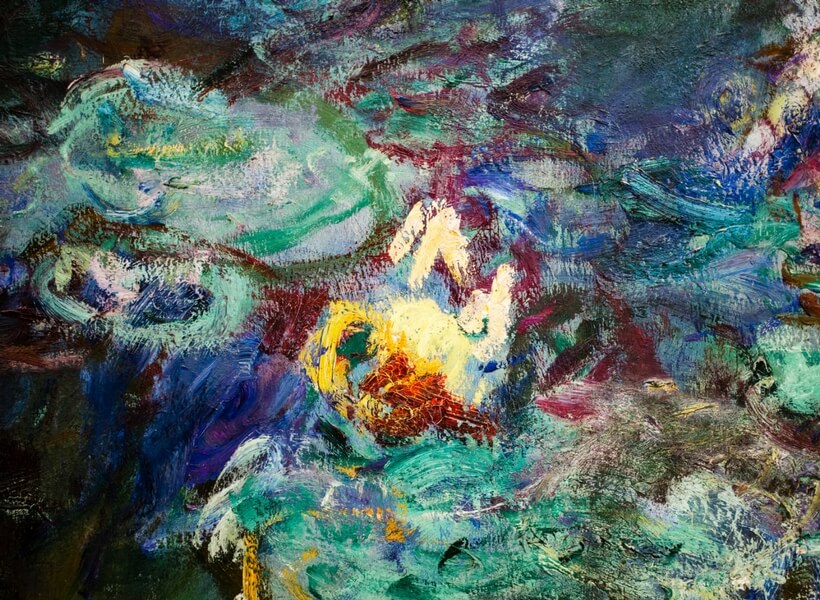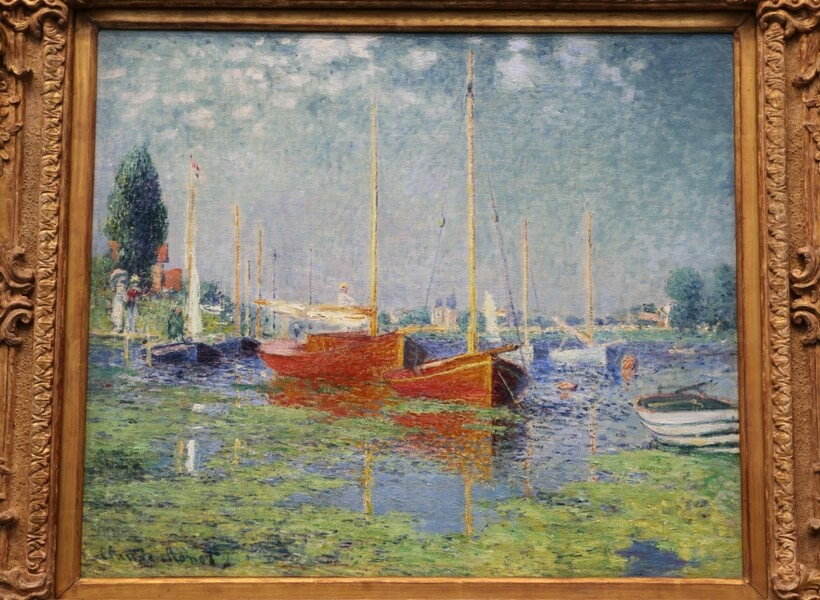Table of Contents for this Episode
Categories: First Time in Paris, Museums in Paris, Paris
What You Will Learn About in this Episode w/ Timestamps
Elyse has taken many visitors to the Orangerie Museum and she shares with us who gets the most enjoyment out of it typically:
- People who enjoy Impressionism.
- Visitors who love to see the optical tricks artists play on.
- Groups who like museums that both small and top quality.
- History lovers who want to see where art revolutions are made.
- Plan on spending an hour at the Orangerie Museum.
- Do not take children unless they can stay quiet while looking at the Water Lilies.
[4’26”] Happy New Year from Annie and Elyse and how French New Year Greetings may seem strange to non-French people.
The Orangerie Museum Building
[6’11”] One of the things that makes the Orangerie in Paris so lovely is that the museum is located at the west end of the Tuileries Gardens, which are magnificent Italian style gardens created by Catherine de Medici and were part of the Louvre. Right next to the Orangerie Museum is Place de la Concorde with the Egyptian Obelisk (it is 3000+ years old!) that Napoleon did not steal from the Egyptians, but rather it was a gift from an Egyptian Prince.
What’s an Orangerie Anyway?
[8’30’] An “Orangerie” is a hot-house used to grow orange and lemon trees that could not survive French winters without protection. All around France you will find fancy buildings built for such purposes, used for the rich and the nobility. Having an “orangerie” was a major status symbol in the days of Louis XIV and on.
This particular “orangerie” was built in the middle of the 19th Century, at first to be a hot-house, but by the time it opened, its purpose had changed to being an exhibitions hall, specifically for Monet to display his amazing work.
How Monet Made the Orangerie
[10’40”] By the end of the 1800s, Monet was a famous artist in France. He wasn’t then the old, venerable man that be became by the time he died in 1926 at 86 years old, but he was well-known and much loved. Monet was given the option to place some of his large paintings of lily pads in the Orangerie and he had a say in the design of the display space, which is unheard of for most artists!
How Monet Took Advantage of His Bad Eyes to His Creative Advantage
[11’50”] For the last 20 years of Monet’s life, because of age and cataracts, he had bad eye-sight with blurry vision at a distance and it got progressively worse.
What Monet loved to do was to paint while looking at his garden in Giverny. The Giverny Garden features sections with different colors, a beautiful pond with willow trees falling down, a Japanese bridge. He painted his garden obsessively his whole life was to paint the clors of the garden at different times of the day and night.
As Monet got older and had more trouble with his sight, he painted from a distance, putting his brush on a long stick. As a result, because it’s hard to have tight control at a distance, Monet’s paintings started to be more abstract strokes of color. This is the sort of thing you can only see when you see the painting up-close and in person and makes visiting the Orangerie Museum so special. Monet couldn’t paint in tiny, precise strokes any more, so to make up for it, he decided to paint on a larger scale, and it worked brilliantly!

Look at Monet’s Paintings Up-Close and at a Distance
[13′] When looking at the Water Lilies up-close you see many layers and strokes of colors, something abstract that will not look like anything you recognize. But when you pull back (20′ or more) you will start to see a vision of leaves and trees and flowers in a pond. And when you move on to the next painting, you see a similar scene, but presented at a different time of the day, under different light condition.
The French Government honored Claude Monet in his later years by giving him the chance to create a series of these murals, and let Monet decide on the size of the canvas, the curvature of the walls, etc. Monet wanted his work to be displayed in natural light, so there are sky lights at the center of the oval.
The Orangerie Museum Is a Space for Meditation
[14’12”] Monet wanted to create a space for meditation. There are seats in the center and you can sit and turn in every direction. This is sometimes hard to do when there are lots of visitors, but that was the idea.
There are signs that ask visitors not to speak while in the rooms with the Water Lilies, but it’s very difficult to enforce. There are guards there to keep the volume down, but you probably won’t have complete silence. We recommend that you do any chit-chat outside of those rooms and if you must speak, please whisper.
What Else is at the Orangerie Museum?
[19′] The Orsay Museum owns so many pieces that some of them have been loaned permanently to the Orangerie Museum. Some of these include some Renoir, Picasso, all are from the ends of the 19th century or the end of the 20th.
The Orangerie also has a space for temporary exhibitions that are always painting, but rotate two to three times a year.
Consider Visiting Giverny As Well
[23’47”] Giverny (on the Oise river) is the place where Claude Monet lived. It is north west of Paris but close enough that you can visit it as a day-trip from Paris. It takes about an hour and a half to get there by car. You can also go there by train or buy a bus tour at the Paris Tourist Office. If you go, you can visit both the gardens and the house.
Marmottan Museum in Paris
[27’26”] There is another museum dedicated to Claude Monet in Paris, and that is the Marmottan Monet Museum. This Museum is a little bit harder to get to, but it’s well-worth it also if you love Monet. Monet’s son opened the Marmottan Museum because he donated pieces he inherited from his father. The Marmottan is where you can see the painting that was used to give the name Impressionism to the art movement we all know and love.
Where Did the Name Impressionism Come From?
But Monet did not name the movement on purpose, an art critic who hated this painting picked up on the name of the painting to critique it and say that it was unfinished. Both the name and the movement became much bigger than this critic ever was!
Monet named this painting Impression, soleil levant (Impression, Sunrise) from which the Impressionist movement was named.

Subscribe to the Podcast
Apple YouTube Spotify RSSSupport the Show
Tip Your Guides Extras Patreon Audio ToursRead more about this show-notes
Episode PageCategories: First Time in Paris, Museums in Paris, Paris

